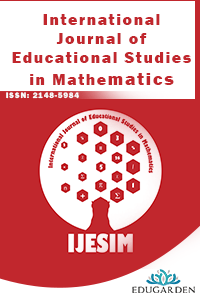Impact of Conceptual and Procedural Knowledge on Students Mathematics Anxiety
Impact of Conceptual and Procedural Knowledge on Students Mathematics Anxiety
The study investigated the
relationship between conceptual knowledge and mathematics anxiety of remedial
mathematics students in an urban community college. The study sample consisted
of 105 remedial mathematics students from four elementary algebra sections. Two
of these four sections were under Conceptual treatment. The other two sections
were under procedural treatment and served as the control group. Students’
mathematics anxiety was measured using the Mathematics Anxiety Rating
Scale-Revised (Fennema and Sherman, 1976). To measure subjects’ conceptual and
procedural knowledge, the participants completed two quizzes (a conceptual quiz
and a procedural quiz) a week before the final exam. The study found that the
conceptual treatment had more positive impact on students’ mathematics anxiety
as compared to the procedural treatment.
Keywords:
Mathematics anxiety, Procedural knowledge, Conceptual knowledge,
___
- Ashcraft, M. H. (2002). Math anxiety: Personal, educational, and cognitive consequences. Current directions Psychological Science, 11(5), 181- 185.
- Bailey, T. (2009). Challenge and opportunity: Rethinking the role and function of developmental education in community college. New Directions for Community Colleges,145, 1130.
- Beck, A.T., & Emery, G. (1985) Anxiety Disorders and Phobias: A Cognitive Perspective. Basic Books, N Y, USA.
- Briars, D., & Siegler, R. S. (1984). A featural analysis of prschoolers’ counting knowledge. Developmental Psychology, 20,607-618.
- Brownell, W. A. (1973). Meaning and skill—Maintaining the balance. In F. J. Crosswhite, J. L.
- Buxton, L. (1981) Do You Panic About Maths? Coping with Maths Anxiety. London: Heinemann.
- Dreger, R. M., & Aiken, L. R. (1957). The identification of number anxiety in a college population. Journal of Educational Psychology, 48, 344–351.
- Fennema, E., & Sherman, J. A. (1976). Fennema-Sherman Mathematics Attitudes Scales: Instruments designed to measure attitudes toward the learning of mathematics by males and females. Catalog of Selected Documents in Psychology, 6(1), 31.
- Hembree, R. (1990). The nature, effects, and relief of mathematics anxiety. Journal for Research in Mathematics Education, 21, 33-46.
- Mary, M.C., & Heather, J. (2006). Algebraic equations: Can middle-school students meaningfully translate from words to mathematical symbols? Reading psychology 27:147-164
- National Center for Education Statistics. (2013). National Postsecondary Aid Study 2007-2008 (NPSAS:2000). Retrieved January, 2013, from http://nces.ed.gov/pubs2013/2013013.pdf
- National Council of Teachers of Mathematics. (1989). Curriculum and evaluation standards for school mathematics. Reston, VA: Author.
- National Council of Teachers of Mathematics. (2000). Principles and standards for school mathematics. Reston, VA: Author.
- Richardson, F., & Suinn, R. (1972). The mathematics anxiety rating scale; Psychometric data. Journal of Counseling Psychology, 19(6), 551-554.
- Scarpello, G. (2005). Helping students get past math anxiety. Retrieved on October 18, 2007; http://www.eric.ed.gov/ERICDocs/data/ericdocs2sql/content_storage_01/0000019b/80/33/58/3f.pdf Skemp, R. (1971). The psychology of mathematics. Baltimore, MD: Penguin Books.
- Taylor, L., & Brooks, K. (1986). Building Math Confidence by Overcoming Math anxiety. Adult Literacy and basic Education, v10.
- Tobias, S. (1993). Overcoming math anxiety. New York: W. W. Norton & Company.
- Yayın Aralığı: Yılda 4 Sayı
- Başlangıç: 2014
- Yayıncı: Ercan MASAL
